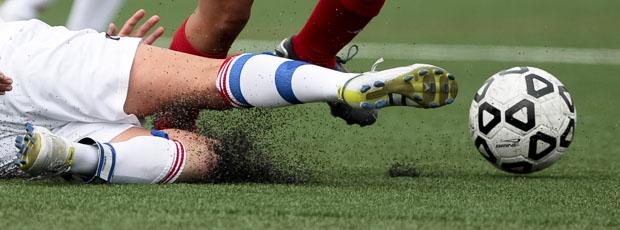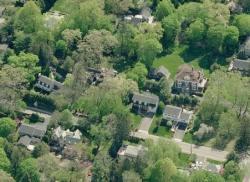Administration Answers Questions about the Proposed 2018-19 School Budget at Two Public Forums
- Category: Schools
- Published: Thursday, 15 March 2018 10:43
- Joanne Wallenstein
 As the proposed 2018-19 budget moves towards completion, the members of the School Board and Administration met with various members of the community this week at a forum hosted by the League of Women Voters of on Monday morning and at a budget forum at SHS on Tuesday am. After the heated meetings about the 2018 bond, these sessions seemed tame, attracting some questions but few fireworks.
As the proposed 2018-19 budget moves towards completion, the members of the School Board and Administration met with various members of the community this week at a forum hosted by the League of Women Voters of on Monday morning and at a budget forum at SHS on Tuesday am. After the heated meetings about the 2018 bond, these sessions seemed tame, attracting some questions but few fireworks.
As it now stands, the proposed budget is $156,899,407mm which represents a 2.09% increase over the 2017-18 budget and would translate into a 1.98% increase for Scarsdale residents and a 3.53% increase for those in the Mamaroneck strip. For the average Scarsdale homeowner, with a home value of $1,595,700, this would mean a $482 tax increase. In Mamaroneck, the increase would be $767.
These numbers do not include $250,000 that was approved last week for a Director of Security at $125,000 and another $125,000 to make building improvements and technology upgrades to enhance security at district schools. The Board has not yet decided whether to fund these from reserves or raise the 2018-19 budget. If they add the $250,000 to the budget, the budget would increase another .18%.
Though the overall student population is projected to be flat, demographers are estimating that the elementary school population will rise by 43 students while the middle school will have 48 fewer students and the high school will be down by 9 students. The budget calls for the addition of two contingency elementary school teachers – (one special ed) and a .4 FTE to teach STEAM courses at the high school, depending on enrollment.
At the League meeting, the administration was asked what they would do if more classes break than anticipated and if additional teachers are needed. Though they thought it was unlikely, they did say that these decisions depend on timing. If additional students move in before mid-August, then the district is committed to ensuring that classes in K-3 remain at 22 students per class, with grades 4-5 at 24 students.
For instance, there is currently a fourth grade inclusion class at Greenacres taught by two teachers that exceeds the cap. If that class splits next year, Assistant Superintendent Drew Patrick said the district would need to hire another teacher.
However, if children move in during the year and cause classes to exceed recommended sizes, sometimes the district will leave the class intact as not to disrupt the children and their relationships with one another and the teacher.
They said that funds would have to be found in other budget lines to pay for salaries. There was concern as the district is practicing tighter budgeting and the fund balance is estimated to decrease from $23.4 million as of June 30, 2017 to $18.8 million as of June 30, 2019. Reserves were impacted by a decision to use over $2 million in 2017 to make up for a shortfall of funds on the 2014 facilities projects.
At the League meeting, Lynne Shain, Assistant Superintendent for Curriculum shared some of the curricular initiatives that are underway in the schools:
One is to teach critical thinking skills, so that students can "Transfer and apply what they are learning to new, non-standard situations." Quoting educator Tony Wagner she said, "It's not what you know, it's what you can do with what you know that counts." Therefore, the district is giving kids more opportunities to solve non-standard problems.
Another set of initiatives involve consideration of the "Whole Child,'" with a series of health and wellness initiatives.
The district is also working to ensure consistency in the curriculum across classrooms and schools. They are using the Teachers College Reading and Writing program as well as Singapore Math and are in the process of building more math leaders among teachers.
For the sciences, the district has found that teaching science via lecturing is not as effective as an inquiry approach to science where children engage in activities and experimentation.
In terms of technology, all sixth graders will have an iPad with them all day in school and can take them home to charge. Elementary school students use chrome books and iPads that are left at school at night. Shain calls this "transformational, making students into workers and experts because they can look things up."
The League inquired about the level of funding for capitol improvements in the proposed budget which is 1.3% and is a decrease over last year. Dr. Hagerman said that the passage of the $65 million bond addressed many of the district's facilities needs and he questioned the recommendation that districts spend 2% of their budget on facilities improvements, especially in a place like Scarsdale where salaries account for such a high percentage of the school budget. Mr. Mattey added that funds for facilities are also included in other budget lines, such as the principals' discretionary spending.
Dr. Hagerman said the district was still looking into additional facilities expenses such as air conditioning and parking, though he added, "We think that much of the parking issue is "behavioral."
A question was asked about the district's forward plan on facilities and educational needs for the future. Dr. Hagerman –answered, saying, "There is a lot going on thinking about 21st century classrooms – rooms, furniture and technology. He said, "We are grappling with this." He also said the administration is trying to centralize the use of grants to fund some experimentation with space, such as Edgewood Room 18 where new furniture was installed. Furthermore, he added that the learning commons at the high school and planned spaces for elementary school students foster collaborative learning and seamlessly integrate eating and learning for all age children.
At the public forum, two residents questioned plans to replace the turf field at Butler Field with another synthetic surface. Ron Schulhof said he had safety concerns about the turf which is made of "crumb rubber," that is made from tire and car tires. He said that kids get scraped and burned from the turf and that it emits harmful gases. He asked the Board to do some research on the surface and find out if the risk to the kids was worth it.
Darlene Lefrancois-Haber, a doctor at Montefiore agreed saying that "Injuries are much more frequent on turf fields," and said, "It would be reckless to proceed with this." She said that the "EPA is conducting a major survey and we now have the data." She told the board that the turf is filled with "carcinogens, lead, chemicals and heavy metals that are prohibited from being disposed of in landfills." She urged the board to "Do what's right for the kids."
Leah Dembitzer from the LWVS of Scarsdale questioned the impact next year on a budget for this year that is $1.3 million below the tax levy limit. Stuart Mattey replied, "It doesn't put us behind but it doesn't jeopardize us going forward."
The Board will meet again on March 19 and discuss the budget at 7:30. They will adopt the budget on April 16 and the budget vote will be held on May 15.













